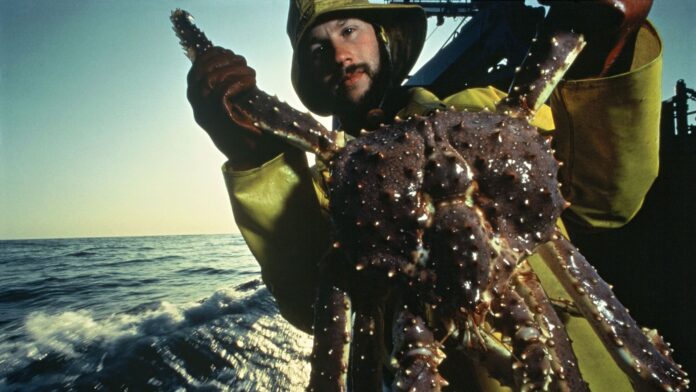For the first time, crews in Alaska won’t be braving ice and sea spray to pluck snow crab from the Bering Sea.
The Alaska Department of Fish and Game canceled the snow crab season earlier this week after a catastrophic population crash of the sizable crustaceans. The red king crab season was canceled for the second year in a row, making it a two-pronged disaster for Alaska’s economy and for those whose livelihoods rely on crab.
“It’s going to be life-changing, if not career-ending, for people,” said Dean Gribble Sr., a 63-year-old crab boat captain who has fished for “opies” — snow crab — since the late 1970s. “A lot of these guys with families and kids, there’s no option other than getting out. That’s where the hammer is going to fall — on the crew.”
Alaskan ecosystems — which are warming faster than other regions because of their proximity to the North Pole — have been roiled by marine heat waves and other impacts made more likely by climate change.
Scientists are still evaluating the cause or causes of the snow crab collapse, but it follows a stretch of record-breaking warmth in Bering Sea waters that spiked in 2019. Miranda Westphal, an area management biologist with the Alaska Department of Fish and Game, said the warmer waters likely contributed to young crabs’ starvation and the stock’s decline.
Officials hope a halt to this year’s crab harvest will boost both species. At this point, little more can be done.
“We’re along for the ride. It’s hard to predict or pretend we could have influences on a stock that is subject to Mother Nature and climate change,” Westphal said. “They need time and space and favorable conditions to rebuild.”
The snow crab collapse came as a surprise. Each season, commercial trawlers complete surveys that estimate species abundance and assess stock. The National Marine Fisheries Service and Alaska Department of Fish and Game co-manage the crab fisheries.
In 2018, “we saw the largest pulse of small crab we’d ever seen in the history of fishery,” Westphal said. “It was looking really good.”
The 2019 numbers for small crab remained promising. No survey was completed in 2020 because of Covid-19.
Then, in 2021, “we saw the biggest crash we’ve ever seen in snow crab. That was really unexpected. I don’t think anyone saw this coming,” Westphal said.
Scientists are still evaluating what happened. A leading theory is that water temperatures spiked at a time when huge numbers of young crabs were clustered together.
In summer, many small snow crab make their habitat in a cold pool that forms on the Bering seafloor. In recent years, which have been dominated by warmer waters and less sea ice, these cold pools have been smaller, concentrating crab into tight quarters.
“They couldn’t deal with it. They couldn’t find enough food. They couldn’t move to colder waters,” Westphal said. “The most plausible explanation is probably starvation.”
Fishing crews have had to push farther north in recent years to harvest snow crab.
“The last three years or four years of fishing for opies, I’ve had to go up to the Russian border and fish,” Gribble, the longtime captain, said.
Such disruptions could become more normal.
In 2018, Bering Sea winter ice, which is important for the cold pool, hit its lowest point on record, according to The Seattle Times, which reported that researchers expect such conditions to be typical by midcentury as the climate warms. The newspaper was the first to report the snow crab season closure.
The collapse of snow crab will have major effects in Alaska and for crew members who often live in Washington and Oregon.
A fleet of about 60 vessels harvested snow crab in 2020, grossing about $132 million, according to an economic report by the National Oceanic and Atmospheric Administration Fisheries and the Alaska Fisheries Information Network.
“These are truly unprecedented and troubling times for Alaska’s iconic crab fisheries and for the hard-working fishermen and communities that depend on them,” Jamie Goen, the executive director of Alaska Bering Sea Crabbers, said in a statement published on Facebook.
Crab shapes economies in Alaskan towns that are home to processing plants.
Instead of canceling the snow crab harvest last year, officials allowed a small slice of the typical catch.
The Seattle Times reported that St. Paul, Alaska, last year lost more than $3 million in tax revenue — about half its yearly budget — because of the diminished snow crab harvest and the closure of the red king crab season.
Hope remains for snow crab. Scientists found increased cold pool coverage in 2020-2021, following the record lows seen from 2017-2019. The most recent survey also saw an uptick in small snow crab.
“We can protect them and get them into the system,” Westphal said.


